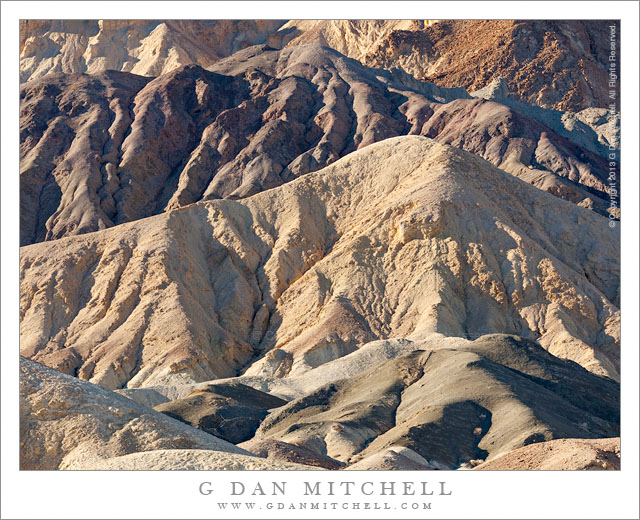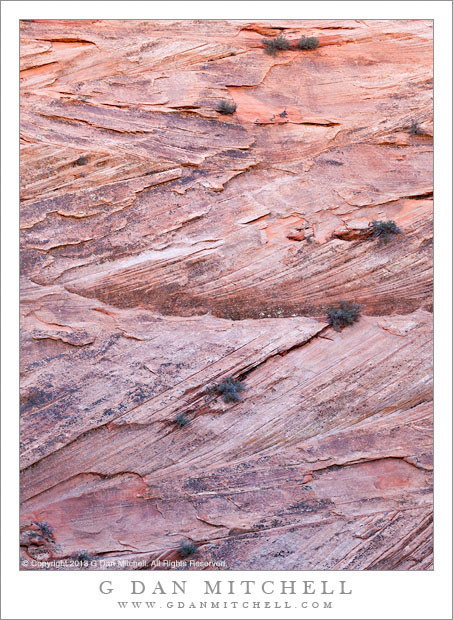
Rising Desert Hills. Death Valley National Park, California. December 10, 2013. © Copyright 2013 G Dan Mitchell – all rights reserved.
A rising series of colorful eroded hills, Death Valley National Park
I get to use this photograph to tell a story at my own expense. Before arriving in Death Valley I had previous shot a very different subject. I don’t recall if it was birds in fading dusk light or perhaps classical musicians in stage lighting and backstage work lights. (Some of you can already guess where this is headed…) On the first morning in Death Valley I headed to a place that I like to photograph in early light – a place where there usually aren’t too many people, despite the easily accessible location, and where the eroded and colorful geology is almost completely devoid of plants. I arrived before sunrise and soon found a nice composition that I had not photographed before. I spent some time working that scene before moving on and photographing another a little ways away. Partway through that second set of shots I realized that my camera was still on the settings for the prior low-light subject – namely ISO 3200. That is not exactly a typical landscape sort of setting, and while good results are possible when shooting low light subjects that way, the noise levels are far from ideal for landscape. I reset and continued shooting. (I did return to the location on the final morning of the trip to reshoot that first subject.)
This scene was one of the first that I shot after realizing my error. These very eroded hills place different color material in a series of rising hills – tan, reddish, purple-black, brown, and more. The smooth features along the tops of some of the small ridges contrast with the very sharp and angular lines of the eroded channels that lead down to the wash. Later in the day the light here is almost impossibly harsh and the colors fade, but for a few minutes at the start (especially) and end of the day the colors briefly intensify.
 G Dan Mitchell is a California photographer and visual opportunist whose subjects include the Pacific coast, redwood forests, central California oak/grasslands, the Sierra Nevada, California deserts, urban landscapes, night photography, and more.
G Dan Mitchell is a California photographer and visual opportunist whose subjects include the Pacific coast, redwood forests, central California oak/grasslands, the Sierra Nevada, California deserts, urban landscapes, night photography, and more.
Blog | About | Flickr | Twitter | Facebook | Google+ | 500px.com | LinkedIn | Email
Text, photographs, and other media are © Copyright G Dan Mitchell (or others when indicated) and are not in the public domain and may not be used on websites, blogs, or in other media without advance permission from G Dan Mitchell.



